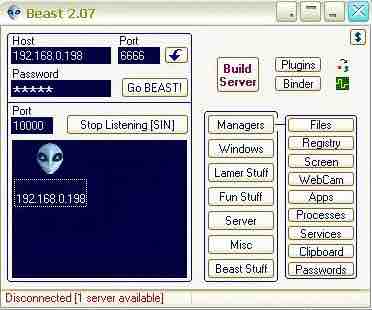Malware
Malware, short for malicious (or malevolent) software, is software used or created by attackers to disrupt computer operation, gather sensitive information, or gain access to private computer systems. It can appear in the form of code, scripts, active content, and other software. Malware is a general term used to refer to a variety of forms of hostile or intrusive software.
Malware includes computer viruses, worms, spyware, adware, and trojan horses . Malware is not the same as defective software, which is software that has a legitimate purpose but contains harmful bugs that were not corrected before release. However, some malware is disguised as genuine software, and may come from an official company website. An example of this is software used for harmless purposes that is packed with additional tracking software that gathers marketing statistics. Malware has caused the rise in use of protective software types such as anti-virus, anti-malware, and firewalls. Each of these are commonly used by personal users and corporate networks to stop the unauthorized access by other computer users, as well as the automated spread of malicious scripts and software.

BEAST Trojan Horse
Beast, a Windows-based backdoor Trojan horse
The best-known types of malware, viruses and worms, are known for the manner in which they spread, rather than any specific types of behavior. The term computer virus is used for a program that has infected some executable software and, when run, causes the virus to spread to other executables. On the other hand, a worm is a program that actively transmits itself over a network to infect other computers. These definitions lead to the observation that a virus requires user intervention to spread, whereas a worm spreads itself automatically.
Purposes
Malware is sometimes used broadly against government or corporate websites to gather guarded information, or to disrupt their operation in general. However, malware is often used against individuals to gain personal information such as social security numbers, bank or credit card numbers, and so on. Left unguarded, personal and networked computers can be at considerable risk against these threats. Since the rise of widespread broadband Internet access, malicious software has more frequently been designed for profit. Since 2003, the majority of widespread viruses and worms have been designed to take control of users' computers for black-market exploitation. Infected "zombie computers" are used to send email spam, to host contraband data such as pornography, or to engage in distributed denial-of-service attacks as a form of extortion.
Another strictly for-profit category of malware has emerged, called spyware. These programs are designed to monitor users' web browsing, display unsolicited advertisements, or redirect affiliate marketing revenues to the spyware creator. Spyware programs do not spread like viruses; instead they are generally installed by exploiting security holes. They can also be packaged together with user-installed software, such as peer-to-peer applications.
The prevalence of malware as a vehicle for Internet crime, along with the challenge of anti-malware software to keep up with the continuous stream of new malware, has seen the adoption of a new mindset for individuals and businesses using the Internet. With the amount of malware currently being distributed, some percentage of computers will always be infected. For businesses, especially those that sell mainly over the Internet, this means that they need to find a way to operate despite security concerns. The result is a greater emphasis on back-office protection designed to protect against advanced malware operating on customers' computers.
Concealment
For a malicious program to accomplish its goals, it must be able to run without being detected, shut down, or deleted. When a malicious program is disguised as something normal or desirable, users may willfully install it without realizing it. This is the technique of the Trojan horse or trojan. In broad terms, a Trojan horse is any program that invites the user to run it, though it conceals harmful or malicious code. The code may take effect immediately and can lead to many undesirable effects, such as deleting the user's files or installing additional harmful software.
One of the most common ways that spyware is distributed is as a Trojan horse, bundled with a piece of desirable software that the user downloads from the Internet. When the user installs the software, the spyware is installed along with it. Spyware authors who attempt to act in a legal fashion may include an end-user license agreement that states the behavior of the spyware in loose terms, which users may not read or understand.